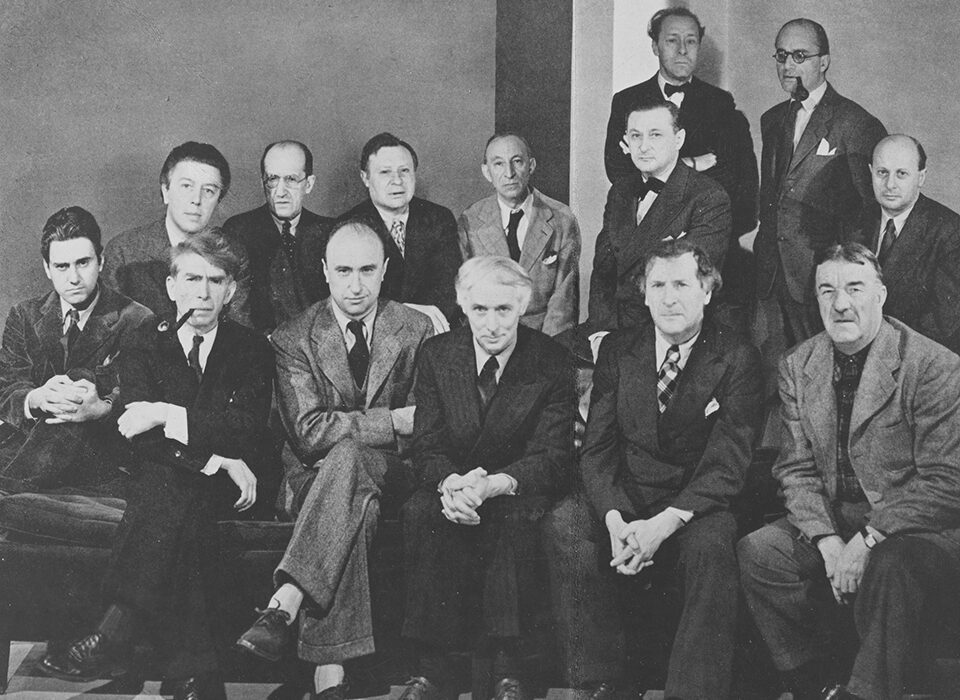On March 3, 1942, a special exhibition opened at the Pierre Matisse Gallery in the Fuller Building at 41 East 57th Street in New York City. Pierre, the youngest son of French painter Henri Matisse and the owner of the gallery, was an art dealer, specializing in modern and contemporary European and American artforms.
While the works that Pierre mounted for the March 1942 show could certainly be described as a representation of the cutting edge European avant-garde, more significantly, each of the 14 pieces on display were by 14 artists who had escaped Europe and the rising tide of fascism and totalitarianism. The exhibition was appropriately titled Artists In Exile and ran at the Matisse Gallery through March 28, 1942.
The 14 artists who contributed a single piece to Artists In Exile—Matta Echaurren, Ossip Zadkine, Yves Tanguely, Max Ernst, Marc Chagall, Fernand Leger, André Breton, Piet Mondrian, André Masson, Amdeé Ozenfant, Jacques Lipchitz, Pavel Tchelitchew, Kurt Seligmann, and Eugene Bermann—each hailed from many different countries and backgrounds. They each worked in contemporary modern styles: Dada, Surrealism, Cubism, and De Stijl. The type of modern styles that had already been targeted, denounced and, in many cases, destroyed by the Nazis as so-called Degenerate Art in the late 1930s.
Because so many of the artists on display were also Jewish further added to the probability that they would become targets of reprisal if the art fell into Nazi hands. Following the Fall of France in June 1940, for those artists who had not already emigrated earlier, the need to leave Europe became paramount.
Many of these artists were assisted by art dealers and patrons like Pierre Matisse and collectors like Peggy Guggenheim. Museums also played an important role in assisting artists and their immediate family members escape. The first director of the Museum of Modern Art, Alfred H. Barr Jr., and his wife, art historian Margaret Scolari Barr, began working with the Emergency Rescue Committee (ERC).
Led by American journalist Varian Fry in Marseilles, France, they attempted to rescue artists whom they expected to be in the greatest danger. These efforts took time and money, and acceptance was never guaranteed in the waning months of American neutrality.
Each artist petitioning for asylum in the United States required a visa from the State Department, an affidavit of financial support, and moral sponsorship clearly stating why the individual felt themselves to be in imminent danger. Biographical information, letters of reference to prove their identity, and a minimum of $400 to secure ocean passage across the Atlantic were also required.
Margaret Scolari Barr described her and her husband’s role in the rescue operations:
“Phone calls and letter-writing were only one part of it because Alfred and I were constantly anxious about the fate of the artists, most of whom we knew personally, some of them trapped in the occupied zone, others wandering from place to place… often with no firm address.”
Over the course of one year, the Emergency Rescue Committee, working with contacts both in Europe and the United States, helped at least 1,500 refugees escape from France through Spain and provided aid to an additional 2,000 more. For his leadership in the operation, Varian Fry would later be awarded the French Legion of Honor and would become the first American to be posthumously recognized as “Righteous Among The Nations” by the state of Israel.
Many assisted by the Emergency Rescue Committee arrived to the American East Coast first, then as now, the locus of the American art collecting world. Fourteen of these refugee artists contributed to the Artists in Exile exhibition, many of whom went on to make important postwar contributions in their fields that likely would not have been possible if they had not fled Europe. The Emergency Rescue Committee merged with the International Relief Association in 1942 and continues to assist refugees today as the International Rescue Committee.

